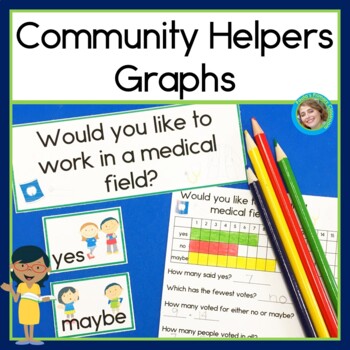Community Helpers Graphing | Making and Interpreting Picture and Bar Graphs
- PDF
Also included in
- This school year your students will focus on math when they're asked to share their ideas and opinions! Harness student excitement and focus it on graphing and math with 78 horizontal, vertical and picture graphs in 2 formats: as single pages to project and complete as a group & as headers to usPrice $20.95Original Price $29.85Save $8.90
Description
Your students will love completing these 8 graphs with a community helpers theme. Students will vote on which jobs they would most prefer, whether they'd like to drive a school bus, whether they'd prefer to work outside or inside, and much more. Each graph is presented two ways: as a single page to project and complete as a class, and as headers for a pocket chart graph. There are even follow up questions included, so your class will notice which has the most/least, how many ___, and how many less ___ than ___. Super easy to use, these graphs will help you seamlessly incorporate graphing skills into your school day.
Click here to be notified when new resources are released at 50% off!
For more Community Helpers see:
- Community Helpers Logic Puzzles,
- Community Helpers Primary Reader,
- Community Helpers Sentence Picture Match,
- Community Helpers Bundle.
Thank you for visiting Paula's Primary Classroom!
- Join my email list & get freebies!
- Follow me on FaceBook.
- Follow me on Instagram.
- Follow me on Pinterest.
Have a great day!
♥ Paula






